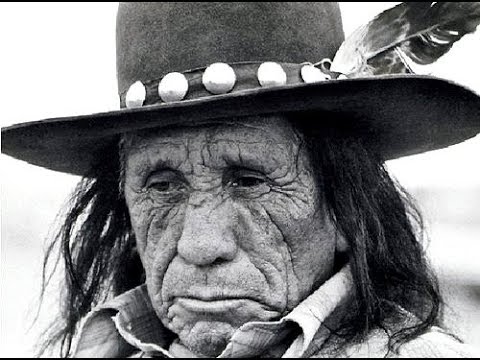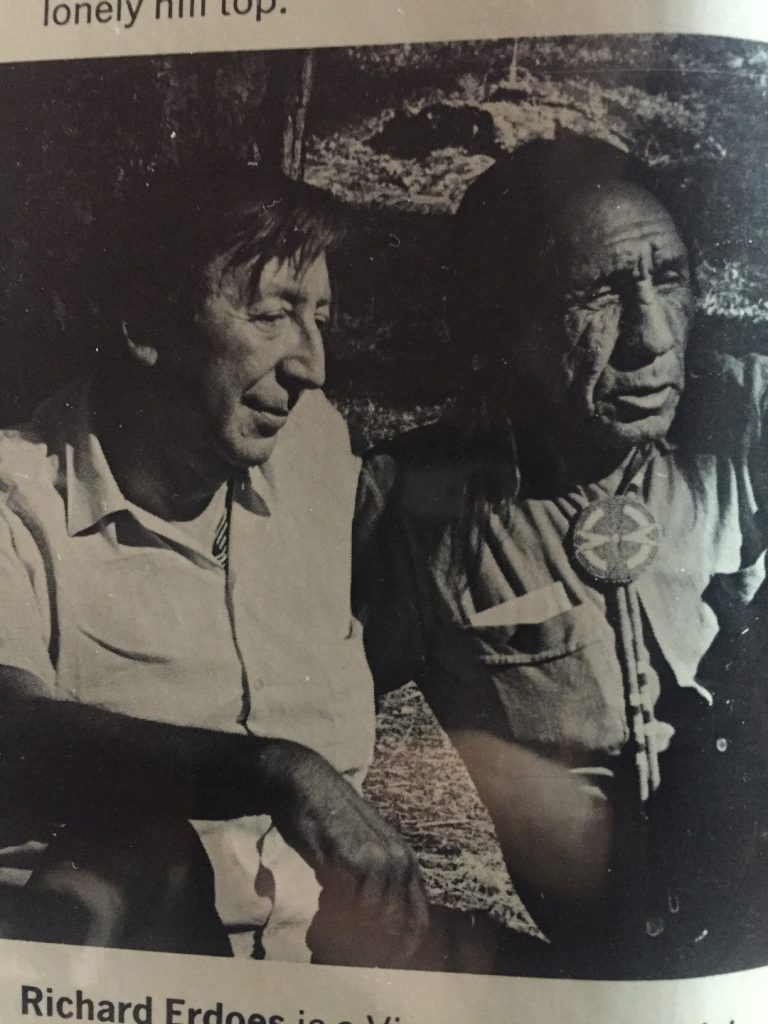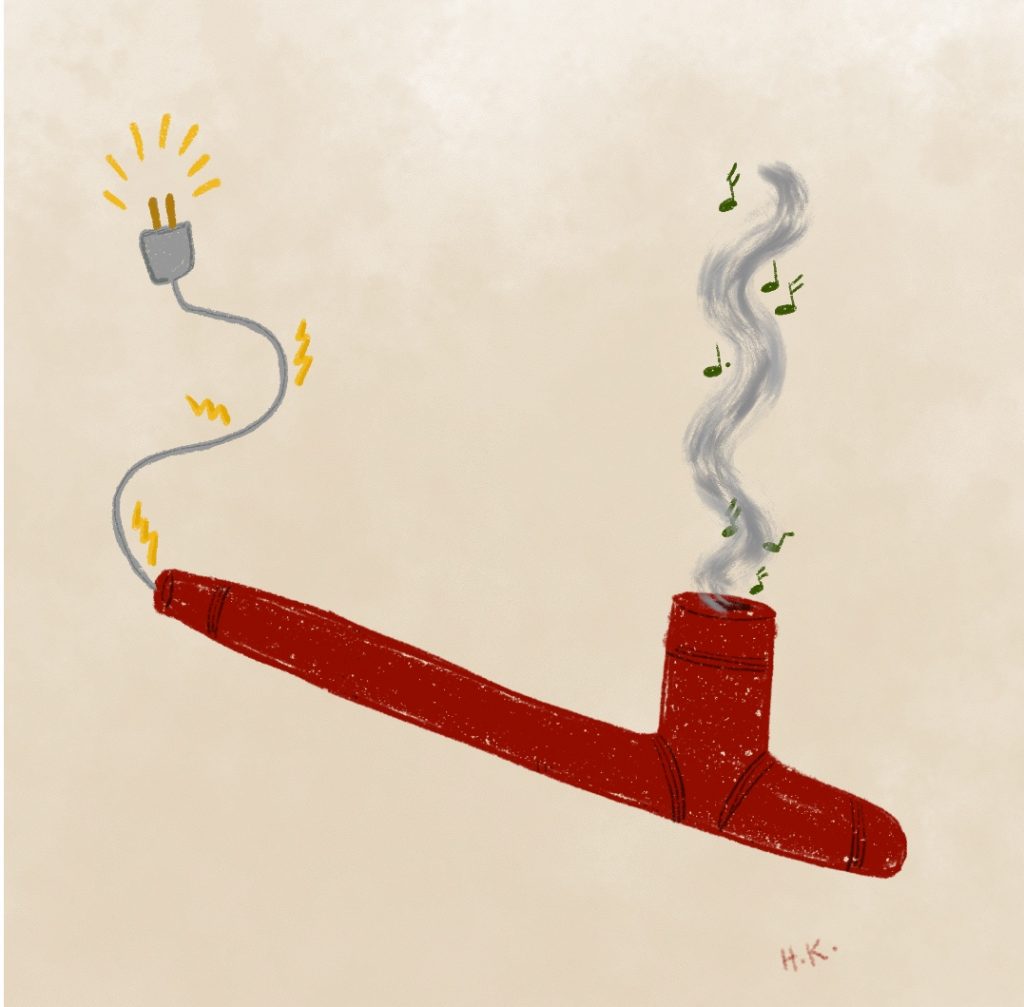Lame Deer and the Sacred Pipe
A few days ago, Brad dreamed we were conducting an intensive in an unfamiliar city. At the end of the day we were approached by a privileged man of authority who wanted to experience sacred ecstasy:
The man said bluntly, “I want you to give me n/om” [the sacred vibration]. He asked for a spiritual experience like he was ordering a cheeseburger at a diner and I was a waiter hired to serve whatever his appetite desired. It was like hearing him say, “I’d like a double n/om-burger and please hold the hot sauce, onions, and chile pepper—make it mild.” I replied, “It doesn’t work that way. I’m not able to give you a spiritual experience as if it’s fast food and furthermore, it comes hot or it’s not n/om.”
Hillary and I then walked away, heading back to our hotel. Just before we entered the premises, my cell phone dropped out of my pocket and fell to the ground. A stranger behind us picked it up and started to hand it to me. I then realized that he had been following us and was likely sent by the rich and powerful man who had asked me for n/om. We worried the man might wish us harm because we didn’t give him what he wanted. We rushed inside the building and left the phone behind, wishing to have no more contact with those people.
After entering the hotel we found that we had left more than the phone behind. We had somehow traveled back in time to what seemed like the late 1960s or early 70s. A hotel attendant came up to us and announced, “The old man is waiting for you. He’s in a room down the hall.” Without hesitation we headed in that direction and found the Lakota holy man John Fire Lame Deer sitting behind a table.

He looked at us and said, “I’d like to buy your pipe.” He then held up a beautiful old Lakota pipe from the 1890s whose bowl and stem were both made of catlinite. I recognized the pipe because I had actually seen it for sale many years ago and truly coveted it, but of course I never purchased it. Yet strangely, this holy medicine man spoke of the pipe as if it were mine. Before I could think of a response, Lame Deer raised the pipe to his mouth to smoke it, even though no tobacco had been placed in its bowl. After taking a puff, he looked at me and offered his evaluation, “You have a good pipe. I want it. I’ll give you sixty dollars for it.”
In that moment I experienced many contradictory feelings all at once. Since the pipe was sacred, I first wondered why Lame Deer, of all people, would treat it as a commodity that could be exchanged for cash. Furthermore, he offered an amount far below what the pipe was economically worth. However, I did not actually own the pipe. Because it was not mine to give or sell, I felt no temptation to exchange it for sixty dollars or any price. I knew Lame Deer’s offer had to involve more than a test for resisting the temptation of “green frog skins” (Lame Deer’s term for dollar bills). Clearly, he was asking me to make a sacrifice. But again, I did not own the pipe—it was not mine to give.
Amidst all this confusion one thing was clear: What I felt most strongly was that the pipe came alive after he smoked it. Lame Deer, now an ancestor on the other side, had filled the Lakota canupa with a mysterious holiness. I felt its spiritual power in the air, flowing from his breath, through the pipe, and into me. He did not take the pipe. He simply held it in the air midway between us. I woke up uncertain about what had happened and dizzy from this visionary experience that I strongly felt but did not understand.
It took two days for Hillary and I to realize what happened in the dream. I remembered my friend, Richard Erdoes, who wrote Lame Deer’s famous biography. That’s where I first learned that Lame Deer was a heyoka medicine man—a “contrarywise . . . upside-down man”.[1] Pete V. Catches, a medicine man and son of the great medicine man Pete Catches, later noted that “Lame Deer was the last true heyoka . . . which means that you literally say and do things backwards in a humorous manner.”[2] We now understood that when Lame Deer asked to buy the pipe it was actually a heyoka means of giving the pipe. This was his way of saying that I now owned it.

Two Worlds
Hillary and I also know that there are two worlds of exchange. One is the world of green frog skins and all the things it can purchase. This world is governed by the attitude that someone can take whatever they want with no intention of sharing or using it to benefit others. This sense of entitlement was expressed by the man in my vision who expected me to provide him immediate, “on-demand” spiritual experience. The other world views ownership not as owning physical things but as owning sacred emotion—a pipe-line to the Big Holy. Inside its medicine lodge you find wisdom keepers whose pipe, tobacco, fire, smoke, and holy exchange are not perceived by nonspiritual eyes and ears. Here the sacred is given away in order to be received, shared, and felt.
For Lame Deer and other medicine people of his time, the sacred pipe was considered the missing half of a human being that was spiritually needed to make you whole. Its value is therefore worth half of your life. When a representative of the Big Holy asks you for your pipe, release it for whatever amount they propose. Know they are asking you to give up any serious concern for earthly materialism. They may offer you a ridiculous price, like Lame Deer offered us, just to lampoon the very nature of our green frog skin world that thinks paper matters more than feeling closer to the Creator. Hand over your attachment to the green frog skin world in exchange for placing greater value on access to the mystery world.
After my vision Hillary and I now own the feeling for that old pipe, its tobacco, fire, smoke, prayer, and the old heyoka man who gave us the pipe by offering to buy it. This mystery is held in the unseen world where n/om (song-filled spiritual electricity) abounds and is beyond the reach of a personal request or selfish quest. Greater than silver and gold, prayer and its holy instruments are forever priceless. It is the owner’s world that must be given away in exchange for another world whose pipe and pipeline are aligned with higher power.
Lame Deer describes this feeling of mystery: “You feel that power as you hold your pipe; it moves from the pipe right into your body. It makes your hair stand up. That pipe is not just a thing; it is alive . . .”[3]. He also reported:
I felt my blood going into the pipe, I felt it coming back, I felt it circling in my mind like some spirit…It suddenly came to me that if I mingle my breath with the sacred smoke, I would also mingle it with the breath of every living creature on this earth, and I also realized that the glow in the pipe was the sacred fire of the Great Spirit. [4]

We Would Like to Purchase Your Pipe…
It’s a good one. We’ll offer you sixty dollars or the first sixty years of your life, the time that passes before you enter elderhood. Know that the transition from any small room—including those promising wealth, stature, prestige, health, and longevity—to the big room of change reverses everything. Here, among those precious and Deer, you will discover how refined materiality has less value than raw spirituality. Reach out and be touched by the numinous pipe, fire, and smoke that are owned only when shared through prayer.
–The Keeneys, December 8, 2019
[1] Lame Deer and Richard Erdoes. 1972. Lame Deer, seeker of visions. New York: Touchstone, 13
[2] From a 2006 interview with Pete V. Catches or Zintkala Oyate. He also says this in the interview about material exchange: “Of course a medicine man does not charge. But that does not mean that you are not supposed to pay him for what he does. Everyone has a different circumstance so what one would give would be of a different value to the person who is giving, say someone who had a lot, in relationship to someone who has nothing. There needs to be some exchange of energy so to speak, or if not it falls back on the medicine man and he becomes sick. In the old days there was not money so a person gave something of great value to them for them to help them. Just to talk to a medicine man they would bring him a horse. Later on as blankets were of great value to them, they would give a medicine man some blankets, etc. for helping them. So people hear that you gave him a blanket, now everyone gives me blankets. How many blankets can I use? People aren’t using their heads or their heart.
Today’s form of barter is usually money. What is wrong with that? In the old days the people made sure that the medicine man had his needs met so that he could do his job…When you ask a medicine man to help you, there are two responsibilities expected from you. One is to realize in order for a medicine man to be able to do his job; people have some responsibility to help him. Prayer is a good way to find what is right here. The other responsibility is that within a year’s time, that person has a responsibility to the spirits. The way they fulfill that is to do something for the people; to help the people. This is how the ‘giveaway’ came about. In the old days, when something happened like a son’s life was saved, etc. they gave everything they had away to help the people. Their value was the value of family and love; not this material world.” https://allaboutheaven.org/sources/pete-catches/190
[3] Lame Deer and Richard Erdoes. 1972. Lame Deer, seeker of visions. New York: Touchstone. 12.
[4] Ibid. 263-264.
